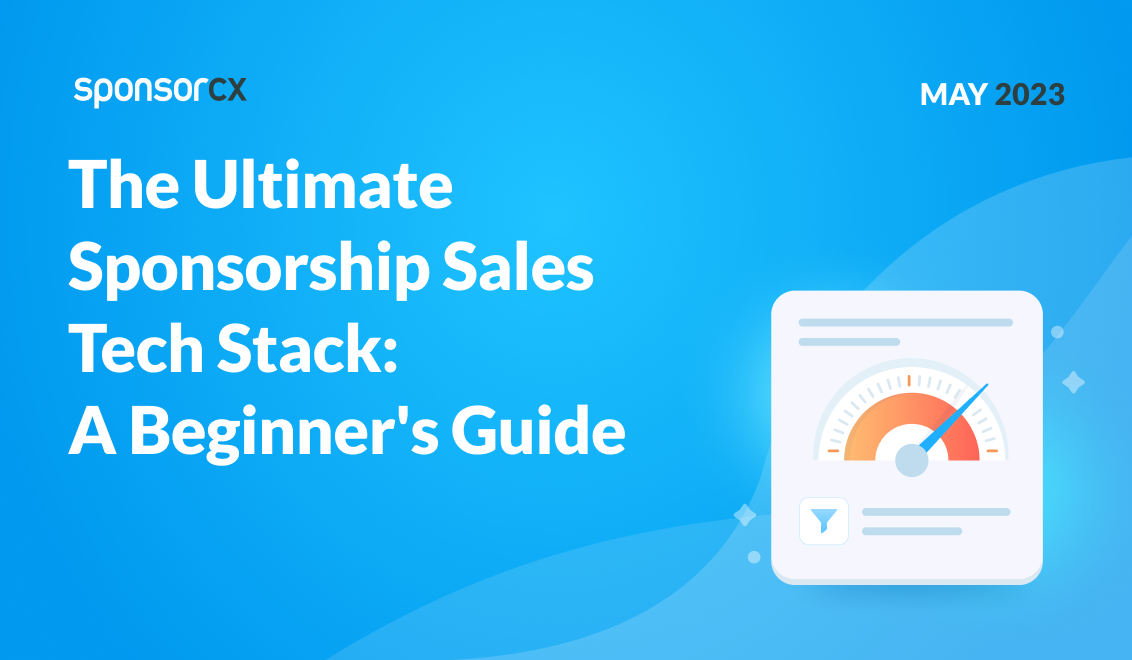The process of selling sponsorships can be a unique challenge, as sponsors are often looking for innovative and cutting-edge solutions that align with their brand and values. As such, it is crucial to have a deep understanding of the tech stack that your organization is using and how it can be leveraged to create even more compelling sponsorship opportunities. In this beginner’s guide, we will walk you through the key steps of the sponsorship sales process and how to effectively utilize your tech stack to attract sponsors and secure funding.
Define Your Objectives
Before you start selling sponsorships, you need to define your objectives. What do you hope to achieve through sponsorships? Is it maximizing revenue, boosting brand awareness, or increasing your community engagement? A successful sponsorship does a little of all three, but it’s important to outline what you want to gain from every specific deal. Clearly define your objectives so that you can target the right sponsors and create a direct and compelling proposal.
Recommended tools:
Trello
Clickup
Identify Prospective Sponsors
Once you have defined your objectives, you need to identify prospective sponsors. Start by researching companies that align with your values and mission. Look for companies that have sponsored similar events or organizations in the past, as they are the most likely to align with your goals. You should also reach out to your personal and professional networks for recommendations.
Recommended tools:
ZoomInfo
Sponsor United
Create a Sponsorship Proposal
After identifying prospective sponsors, you need to create a sponsorship proposal. A sponsorship proposal should outline the benefits of sponsorship and how the sponsor can achieve their goals by partnering with you.Your proposal should be tailored to the sponsor’s specific needs and objectives. The more personal you can make your proposal, the better.
Recommended tools:
Proposify
PandaDoc
Digideck
SponsorCX
Make the Pitch
With your proposal in hand, it’s time to make the pitch. The pitch can take many forms, including a phone call, email, or in-person meeting. During the pitch, you should highlight the most amazing assets and how it aligns with the sponsor’s objectives. Also take the time to show how you specifically are the right way for a sponsor’s target audience to be reached. You should also be prepared to answer any questions the sponsor may have. While it’s easy to get caught up in numbers and proposal details, focus on storytelling. This can help your potential sponsors see the long term vision for your partnership.
Recommended tools:
Digideck
Negotiate the Agreement
If the sponsor is interested in partnering with you, it’s time to negotiate the agreement. The agreement should very explicitly outline the terms of the partnership, including the sponsorship package, payment schedule, and any other details. It’s important to ensure that the agreement is mutually beneficial and that both parties are satisfied with the terms to avoid any messy legal struggle in the future.
Recommended tools:
Bonham Wills
Fulfill the Sponsorship
When the agreement is signed, it’s time to fulfill the sponsorship. The process of fulfillment is more than just putting up the signage or recording the advertisement, It’s also keeping in regular contact with the sponsor and providing regular updates on how the sponsorship is being fulfilled, including proof of performance updates, approvals of any kind, and metrics on how many people were reached.
Recommended tools:
SponsorCX
Evaluate the Results
After the sponsorship has been fulfilled, it’s important to evaluate the results. This involves measuring the impact of the sponsorship and determining whether it achieved the desired objectives. By evaluating the results, you can learn from the experience and improve your sponsorship strategy for future partnerships.
Recommended tools:
Relo Metrics
Zoomph
Even though the sponsorship sales process can be daunting at first, by following these key steps and utilizing the right tools, you can better attract sponsors and secure more funding for your organization or event. Remember to define your objectives, identify prospective sponsors, create a compelling proposal, pitch to specific needs, negotiate a mutually beneficial agreement, go the extra mile in fulfilling the sponsorship, and then evaluate the results.
Check out SponsorCX if you are looking for a software tool to manage your sponsorship contacts, build proposals and track fulfillment.











